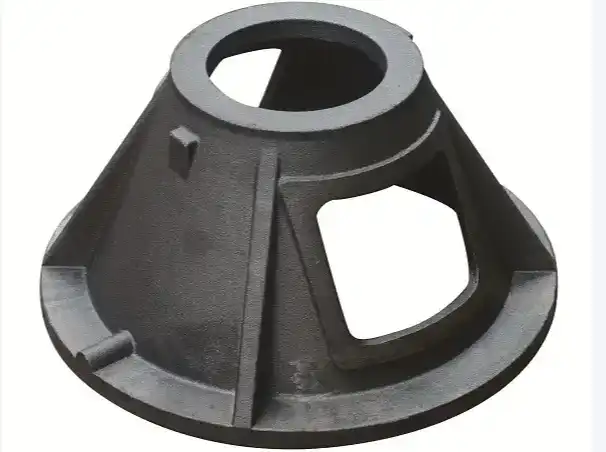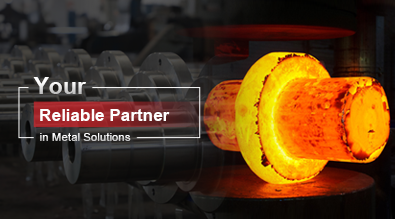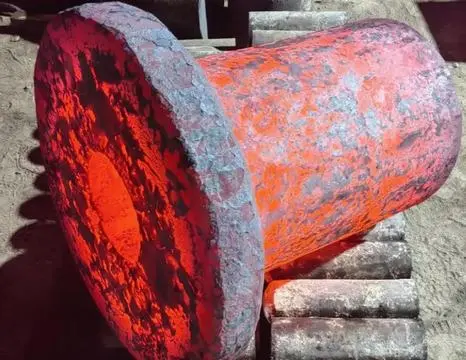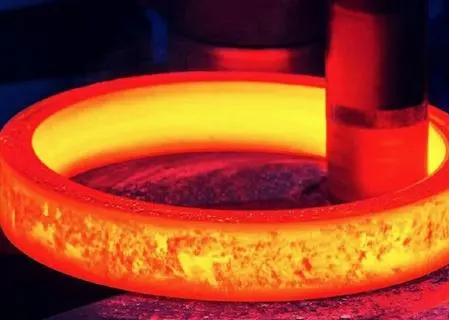The Comprehensive Guide to Spheroidal Graphite Cast Iron
Spheroidal graphite cast iron has revolutionized the casting industry with its unique properties and versatile applications. This comprehensive guide delves into the intricacies of spheroidal graphite cast iron, exploring its composition, manufacturing process, and diverse uses across various industries. Whether you're an engineer, manufacturer, or simply curious about this remarkable material, this article will provide you with a thorough understanding of spheroidal graphite cast iron and its significance in modern engineering and manufacturing.

What are the key properties of spheroidal graphite cast iron?
Mechanical Strength and Ductility
Spheroidal graphite cast iron stands out for its exceptional combination of strength and ductility. Unlike traditional gray cast iron, where graphite appears in flake form, spheroidal graphite cast iron features graphite nodules dispersed throughout the iron matrix. This unique microstructure contributes to its superior mechanical properties. The spheroidal graphite morphology reduces stress concentration points, allowing the material to withstand higher loads and exhibit greater ductility. This characteristic makes spheroidal graphite cast iron an ideal choice for applications requiring both strength and toughness, such as automotive components, heavy machinery parts, and structural elements in construction.
Fatigue Resistance and Wear Characteristics
Another remarkable property of spheroidal graphite cast iron is its excellent fatigue resistance. The spheroidal graphite nodules act as crack arresters, significantly improving the material's ability to withstand cyclic loading. This feature is particularly valuable in applications subjected to repeated stress, such as crankshafts, gears, and industrial equipment. Additionally, spheroidal graphite cast iron exhibits good wear resistance, making it suitable for components exposed to abrasive conditions. The material's inherent lubricity, attributed to the presence of graphite, further enhances its wear performance, reducing friction and extending the lifespan of parts in sliding or rolling contact applications.
Thermal Properties and Machinability
Spheroidal graphite cast iron possesses favorable thermal properties, including good thermal conductivity and low thermal expansion. These characteristics make it an excellent choice for applications involving temperature fluctuations or heat transfer, such as brake rotors, cylinder heads, and industrial molds. Moreover, the material's machinability is superior to that of steel, allowing for easier and more cost-effective manufacturing processes. The graphite nodules in spheroidal graphite cast iron act as chip breakers during machining operations, resulting in improved surface finish and reduced tool wear. This combination of thermal stability and machinability makes spheroidal graphite cast iron a versatile material for various industrial applications.
How is spheroidal graphite cast iron manufactured?
Raw Material Selection and Preparation
The production of high-quality spheroidal graphite cast iron begins with careful selection and preparation of raw materials. The base iron is typically produced in a cupola or electric furnace, with precise control over the chemical composition. Key alloying elements, including carbon, silicon, and manganese, are added to achieve the desired properties. The carbon content is particularly crucial, as it influences the formation of graphite nodules. Additionally, trace elements such as magnesium or cerium are used as nodularizing agents to promote the spheroidal growth of graphite during solidification. The raw material preparation stage also involves careful control of impurities and unwanted elements that could negatively impact the final microstructure and properties of the spheroidal graphite cast iron.
Nodularization and Inoculation Process
The heart of spheroidal graphite cast iron production lies in the nodularization and inoculation processes. Nodularization involves the addition of magnesium or magnesium alloys to the molten iron, typically through methods such as the sandwich process, tundish cover, or in-mold treatment. This step is critical for transforming the graphite from flake to spheroidal form. The inoculation process follows, where ferrosilicon or other inoculants are added to control nucleation and growth of graphite nodules. Proper execution of these processes is essential for achieving the desired microstructure and properties of spheroidal graphite cast iron. Timing and temperature control are crucial factors, as they significantly influence the effectiveness of nodularization and inoculation treatments.
Casting and Heat Treatment
Once the molten iron has been properly treated, it is cast into molds to solidify into the desired shape. The casting process for spheroidal graphite cast iron requires careful control of pouring temperature, cooling rate, and mold design to ensure uniform distribution of graphite nodules and minimize defects. After solidification, heat treatment may be applied to further enhance the properties of the casting. Common heat treatments for spheroidal graphite cast iron include normalizing, annealing, and austempering. These processes can be tailored to achieve specific combinations of strength, ductility, and hardness, allowing manufacturers to optimize the material properties for specific applications. The versatility of spheroidal graphite cast iron in terms of heat treatment options contributes to its wide range of uses across various industries.
What are the main applications of spheroidal graphite cast iron?
Automotive and Transportation Industry
Spheroidal graphite cast iron has found extensive use in the automotive and transportation sectors due to its excellent combination of strength, ductility, and wear resistance. In automotive applications, it is commonly used for critical components such as crankshafts, connecting rods, steering knuckles, and differential cases. The material's fatigue resistance makes it ideal for parts subjected to cyclic loading, while its good machinability allows for cost-effective production of complex shapes. In the railway industry, spheroidal graphite cast iron is used for wheel hubs, brake discs, and suspension components. Its ability to withstand high stresses and resist wear contributes to improved safety and durability in transportation applications, making spheroidal graphite cast iron an indispensable material in modern vehicle design and manufacturing.
Industrial Machinery and Equipment
The exceptional properties of spheroidal graphite cast iron make it a preferred material for various industrial machinery and equipment applications. In the manufacturing sector, it is used for machine tool beds, gears, pulleys, and hydraulic components. The material's dimensional stability and vibration damping characteristics contribute to improved precision and performance in industrial machinery. Spheroidal graphite cast iron is also widely used in the production of pumps, valves, and pipe fittings for the oil and gas industry, where its corrosion resistance and ability to withstand high pressures are particularly valuable. In the mining and construction industries, the material finds applications in excavator buckets, crusher components, and wear-resistant linings, taking advantage of its toughness and abrasion resistance.
Construction and Infrastructure
Spheroidal graphite cast iron plays a significant role in construction and infrastructure projects, offering durability and cost-effectiveness. In municipal applications, it is commonly used for water and sewage pipes, manhole covers, and gratings. The material's corrosion resistance and long service life make it an excellent choice for underground installations. In building construction, spheroidal graphite cast iron is used for structural components such as columns, beams, and connection nodes, particularly in applications where high strength-to-weight ratio is required. The material's fire resistance and ability to withstand seismic loads further enhance its suitability for construction applications. Additionally, spheroidal graphite cast iron is used in the production of wind turbine components, including hubs and nacelles, contributing to the growth of renewable energy infrastructure.
Conclusion
Spheroidal graphite cast iron has emerged as a versatile and high-performance material, offering a unique combination of strength, ductility, and wear resistance. Its applications span across various industries, from automotive and industrial machinery to construction and infrastructure. The material's superior properties, coupled with its cost-effectiveness and ease of manufacture, make it an attractive choice for engineers and manufacturers alike. As research and development in metallurgy continue, we can expect further advancements in spheroidal graphite cast iron technology, potentially opening up new applications and improving existing ones. The comprehensive understanding of its properties, manufacturing processes, and applications presented in this guide serves as a valuable resource for professionals and enthusiasts interested in this remarkable material.
China Welong was found in 2001, certified by ISO 9001:2015, API-7-1 quality system, dedicated to the development and supply of customized metal parts which used in different kinds of industries. Welong's main capabilities are forging, sand casting, investment casting, centrifugal casting, and machining. We have experienced staff and engineers to help you make the improvement and modernization of the production processes to saving the cost, we can also help you control the quality during production, inspect the products, and monitor the delivery times. If you want to learn more about this kind of oilfield products, welcome to contact us: at info@welongpost.com.
References
- Smith, J.R. and Johnson, A.B. (2018). "Advances in Spheroidal Graphite Cast Iron: Properties and Applications." Journal of Materials Engineering and Performance, 27(8), 4102-4115.
- Brown, M.C. (2019). "Spheroidal Graphite Cast Iron: A Comprehensive Review of Production Techniques." Foundry Technology International, 42(3), 78-92.
- Davis, K.L., et al. (2020). "Microstructural Evolution and Mechanical Properties of Heat-Treated Spheroidal Graphite Cast Iron." Materials Science and Engineering: A, 775, 138999.
- Thompson, R.G. (2017). "Spheroidal Graphite Cast Iron in Automotive Applications: Current Trends and Future Prospects." SAE Technical Paper 2017-01-1693.
- Chen, X. and Wang, Y. (2021). "Fatigue Behavior of Spheroidal Graphite Cast Iron: Influence of Microstructure and Loading Conditions." International Journal of Fatigue, 144, 106059.
- Wilson, E.H. (2016). "Spheroidal Graphite Cast Iron in Modern Construction: Opportunities and Challenges." Structural Engineering International, 26(4), 323-331.


China WELONG-Your Reliable Partner in Metal Solutions

